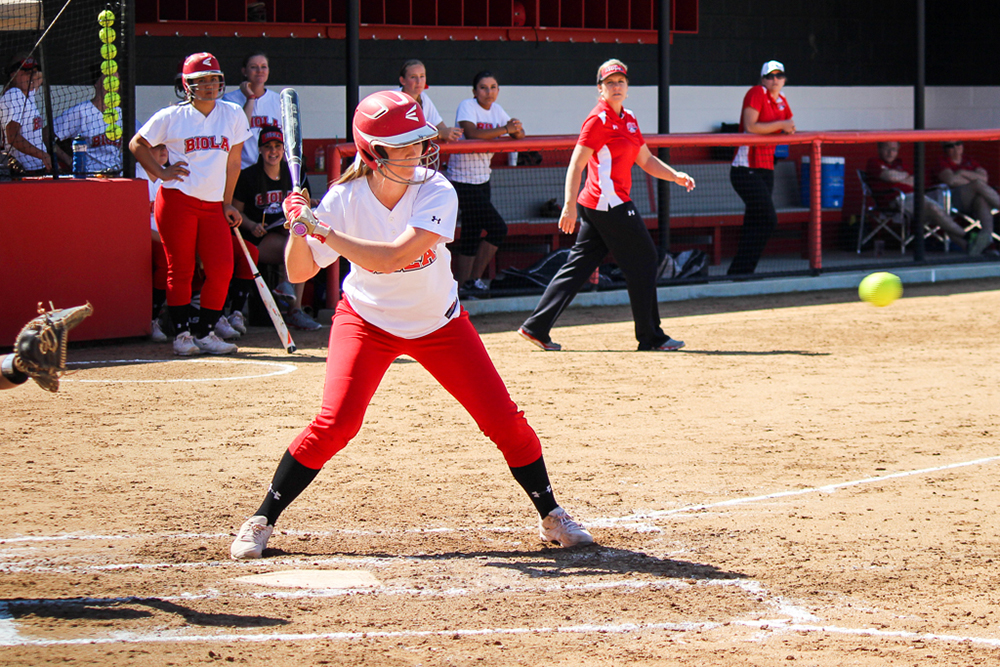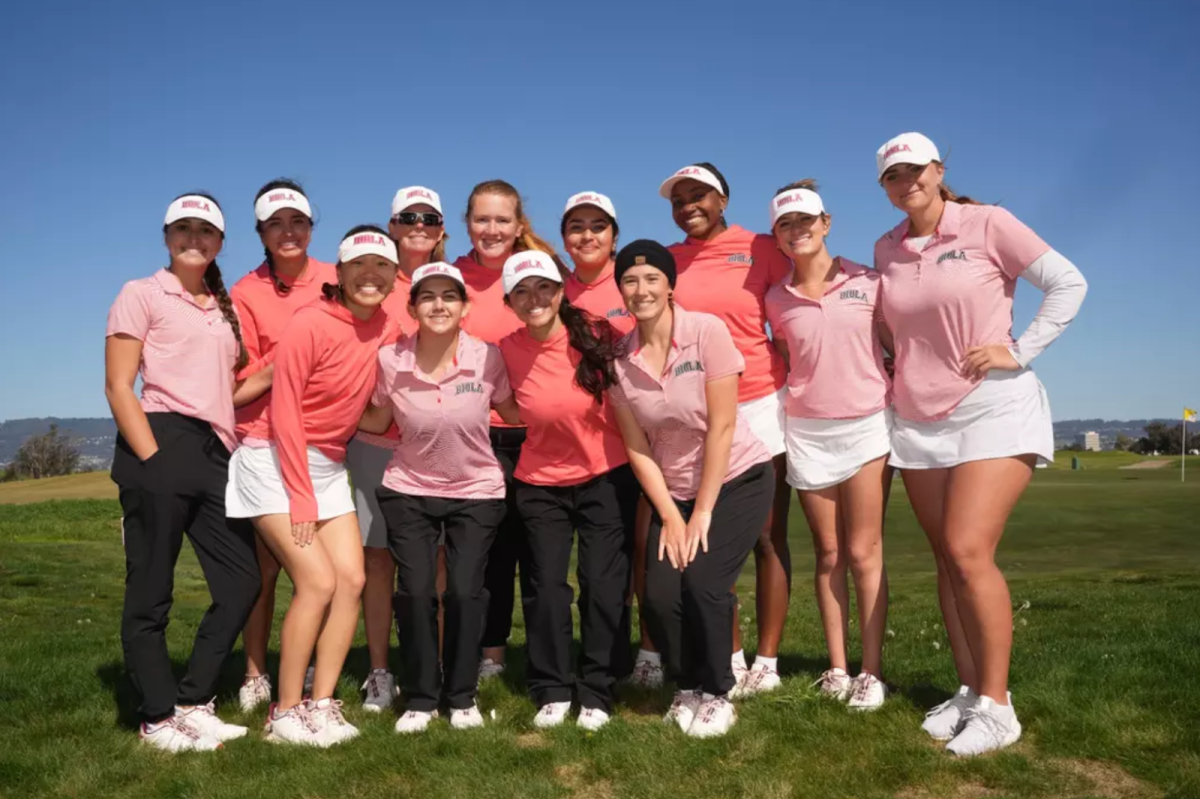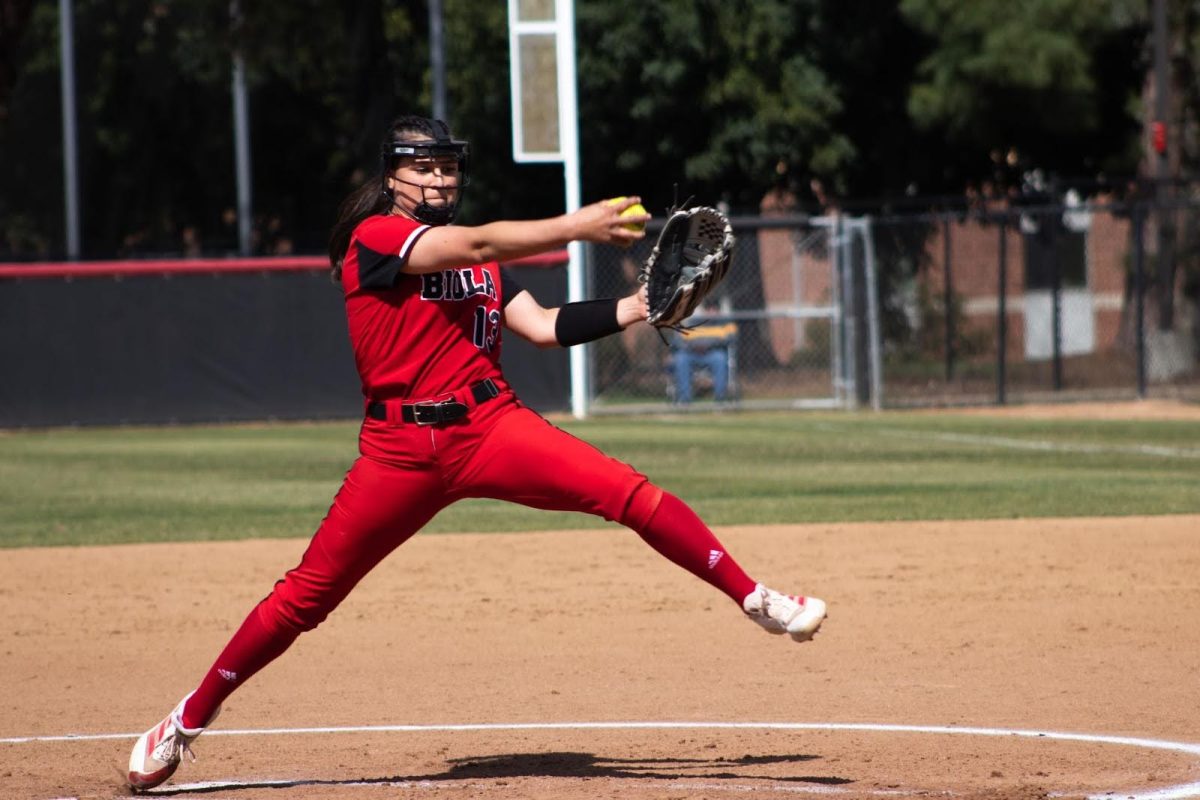Conventional sports wisdom says that you need to have a large team in order to succeed. However, Biola softball is debunking that argument in 2015.
The Eagles picked up doubleheader sweeps of Golden State Athletic Conference foes Hope International University and William Jessup University this past week, all the while proving a superfluously deep roster unnecessary.
The average roster size in the GSAC is just under 18 players per team. Biola, tied for second in the conference with a 6-2 record and ranked 14 in the nation, has only 13 total players.
Out of the eight defensive positions, excluding the pitcher, five are played by the same person game in and game out. Two are occasionally switched back and forth between two positions, and the eighth is shared between two players.
The infield core, consisting of freshman first baseman Selina Sherlin, senior second baseman Ashley Spadt, senior shortstop Sarah Stromwall and senior third baseman Heather Hall, has started every single game and are rarely removed. The fifth player solidified position player is senior Brooke Madrid, who locks down the outfield in center.
Juniors Bria Madrid and Iliana Morales split time catching behind the plate, depending on who is pitching. In the outfield sophomore Kasey Hormel has started every game, whether in right or left, with freshman Anjie Amezquita taking over whichever Hormel does not occupy.
That makes nine players starting in the same position at least 50 percent of the time. The reasoning behind the lack of changes?
Defensively, at .969, the Eagles boast the 11th best defensive percentage in the nation, in addition to an infield ranked fifth in putouts and 10th in assists. Offensively, six of the starters are currently hitting over .300, and as of this weekend were averaging a run and a half more per game than last years squad, who went on to 36 games.
Basically, if it ain’t broke, don’t fix it.
However, problems can arise in this philosophy, as seen in Saturday’s second game when the Eagles lost Heather Hall to a shoulder injury halfway through the game. This forced major fielding changes, moving players out of their normal positions and relying on others to produce at the plate.
Hall should be back sooner rather than later, a huge sigh of relief for Biola. Yet several players have stepped up both defensively and at the plate in her brief absence, another comforting sign for a team with young blood.
It is true that there are several players who do not fit into the everyday start role. Do not feel bad for those four players, though. They fit into another very important category — pitchers.
Senior Reba DePriest, boasting a 10-2 record, averages just over 10 strikeouts per game and is second in the nation in total K’s. Sophomore righty Kimmy Triolo leads the team with a 1.91 ERA. Newcomers Kendall Maddox and Terri Van Dagens have both played integral roles, with Van Dagens the No. 2 starter just behind DePriest.
Sure, at first glance a smaller roster might seem like a disadvantage. However, take a closer look at Biola softball.
They are not just 13 players.
They are one team — all doing their individual share to contribute to the success of the team.
Just a half-game back of Concordia University Irvine halfway through the season, a GSAC title is within Biola’s grasp going forward. Yet the Eagles will need every player on their 13-woman roster to pull their weight, whether that be starting every game, pinch-hitting in clutch situations or coming in to close out the final inning in the circle.







